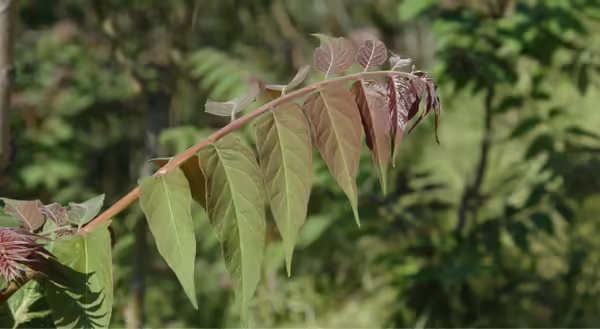
In the world of landscaping, trees are the backbones of the landscape. They are permanent structures that have stately features, shade our homes, provide spring floral displays, and some amazing fall color. There are, however, some trees that just behave badly. You’re likely familiar with maples that drop their helicopter seeds (known as samaras) all over the neighborhood, sprouting up scattered shoots in our lawns and flowerbeds—hard to call this a bad tree with the fun they bring to children, but a nuisance to be sure.
White mulberry (Morus alba) is a transplant from Asia that matures quickly in disturbed areas like fencerows, and is considered a weedy and invasive pest in Illinois. They are adaptable to shade, sun, drought and various soil conditions making them prolific. The leaves are alternately arranged on the stems and present variable lobes but are shiny and heart shaped at the base on a fairly small tree of thirty to forty feet.
Many of us stop at a fruiting mulberry tree to snack, perhaps catching up with the neighborhood birds while we munch. The tree bears their entire fruit supply all at once, providing an abundant harvest, but more often just leaving a mess behind. Our bird friends spread the seeds, which sprout more unwanted mulberry shoots. These new mulberry trees are fast growing, which means they have weak wood, and their aggressive roots and can uproot sidewalks, barge into older sewer systems, and even intrude on the foundations of homes. Some gardeners, whose hearts are in the right place, may think this tree could be left for the birds, while in fact it displaces native species in Illinois woodlands and is not an ideal plant for a diverse habitat.
Tree of Heaven (Ailanthus altissima) shares many of the same characteristics. It is non-native and fast growing, and is adaptable to many sites. It also has aggressive roots and can look weedy in appearance. These trees have high germination rates and can become established in even the poorest site conditions, and is common around railroad tracks in Illinois. Tree of Heaven has striated bark, fuzzy reddish stems, bunches of greenish samaras (like maple), and pinnately compound leaves (similar in arrangement to sumac, buckeye, or walnut) that emerge bronzish- purplish before turning dark green.
One of the biggest issues with Tree of Heaven in the landscape setting is that it is a clonal tree. Once established, dozens of root suckers erupt around the tree, which is a super-nuisance if that happens to be in your yard. It has also been identified as a preferred host of spotted lantern fly, an invasive insect pest we expect to see in Illinois in the coming years. This pest could seriously impact the country's orchards and native habitats.
Control options for white mulberry, which is notorious for re-sprouting, include cutting the stump and painting with an herbicide within 10 to 15 minutes.
Treatment for Tree of Heaven requires a “basal-bark” treatment where the plant is sprayed on the lower 12 to 15 inches, wetting all sides of the stem, root collar, and any exposed roots. Be careful to not allow the herbicide to run off. To penetrate the bark, an oil-based herbicide or oil carrier additive is needed for this type of treatment. This technique works best on smaller trees with smooth bark. Contact your local Extension office or download the Management of Invasive Plants and Pests of Illinois for specific chemical recommendations.